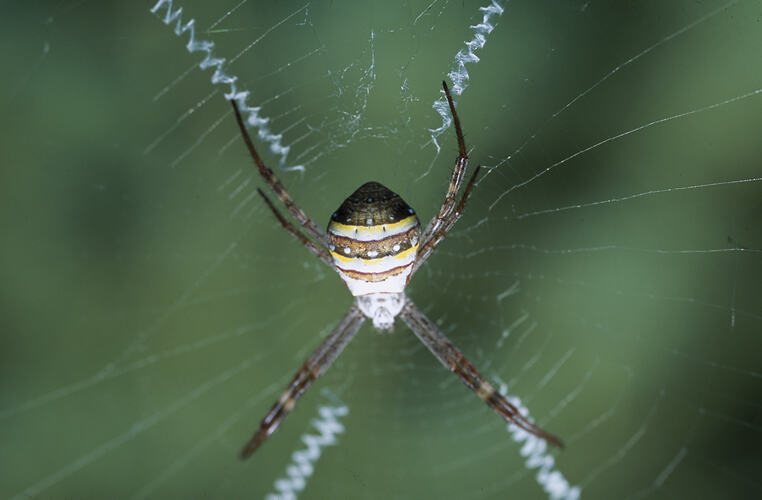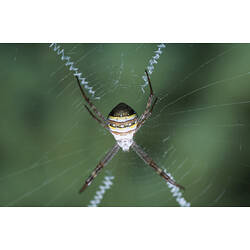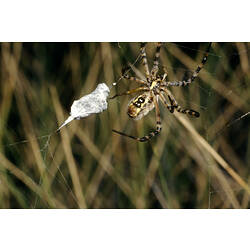General Description
Small-bodied with relatively long legs; often appears to have only four legs due to resting position in web. The female cephalothorax is brown and covered with silky hairs. Abdomen with horizontal stripes of yellow and crimson brown, sometimes with pale spots on the brown stripes. Legs dark brown to black with a few yellowish bands. Males with cream body mottled with brown pattern. Body up to 4 mm long (male), 20 mm long (female).
Biology
The St Andrew's Cross spider commonly builds its web amongst shrubs and other vegetation or against walls of buildings. It normally hangs upside down in the web with two paired legs placed along each arm of the cross. The silken cross may be used for strengthening the web, for camouflage or for enhancing prey catches. It has been shown that the cross reflects ultra-violet light which is particularly attractive to insects. Egg sacs are pear-shaped, green in colour and are suspended in nearby vegetation rather than in the web itself.
Distribution
Eastern mainland Australia.
Habitat
Woodlands, heathlands, dry sclerophyll forests and urban gardens.
More Information
-
Animal Type
-
Animal SubType
-
Brief Id
Cross pattern in web, yellow and brown stripes across abdomen.
-
Colours
Grey, White, Brown, Yellow, Red
-
Habitats
Wetland, Urban, DryForest, WetForest, Woodland, Mallee, Grassland
-
Where To Look
-
Diet
Insects
-
Hazards
The bite of this spider is considered harmless or at most to cause a weak local reaction (may include redness, swelling, burning or itching at site of bite). Few bites have been recorded.
-
Endemicity
-
Conservation Statuses
CITES: Not listed, FFG Threatened List: Not listed, EPBC Act 1999: Not listed, IUCN Red List: Not listed
-
Web
Web
-
Taxon Name
-
Scientific Author
Karsch, 1878
-
Common Name
St Andrew's Cross Spider
-
Kingdom
-
Phylum
-
Subphylum
-
Class
-
Order
-
Infraorder
-
Family
-
Genus
-
Species Name
keyserlingi



